In accordance with the Royal Institute of Chartered Surveyors (RICS), Vendor Management, or the ‘upfront’ management of the supply chain, is the overarching management of all contacts, service offerings, and performance and trading history records of any organization that provides products and services to the business.
RICS professional guidance for Commercial Management of Construction (1st edition, March 2016) details why Vendor Management is a time-consuming exercise that requires concerted efforts to keep the data from the relevant processes up to date: trades, locations, key staff, certifications, insurances, classifications, and accreditations can be out of date as quickly as they are recorded.
Using a Project Management Information System (PMIS) like PMWeb, commercial managers can improve the monitoring, tracking, and reporting of the different vendor management processes. The first of those processes is the vendor database, which will be used to capture and maintain details of all entities that could be considered for delivering the different scope of work and services required for executing capital construction projects. For each vendor, the database will identify the type of services and scope of work that a vendor can provide, the status of the vendor qualification, location of the vendor including their different business addresses, authorized contacts details, list of resources that the vendor has, trade registrations details, insurances, and indemnities polices details, among others. PMWeb also allows importing the list of vendors using MS Excel file format.
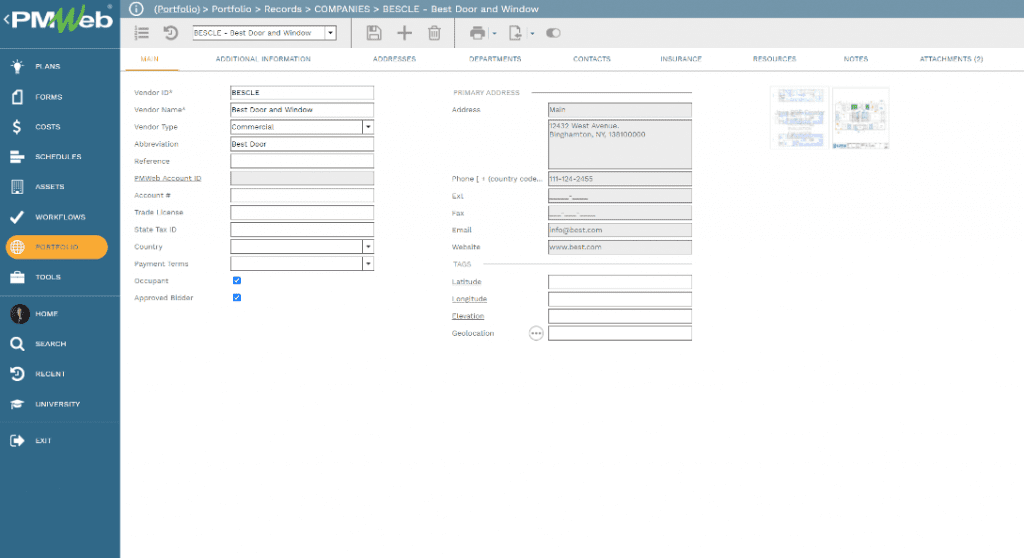
All supportive documents for trade accreditations and certificates, insurances, and indemnities policies, audited financial statements, resumes of project management and other key resources, company brochures, among others, will be attached to their relevant vendor. Although documents can be directly uploaded and attached to the vendor form, nevertheless, as a best practice, this requires uploading and storing those documents into the PMWeb document management repository. PMWeb allows creating file folders and subfolders to upload those documents in an organized and controlled manner. Access permission rights can be set to each folder or subfolder to restrict viewing or editing those documents. In addition, PMWeb allows linking relevant transactions to each record, whether those transactions were other PMWeb records or imported emails.PMWeb also allows formalizing the process for registering and maintaining the qualification of vendors using the prequalification module. PMWeb allows designing the prequalification form used by vendors to submit their information in the form and format required by the commercial team and other entity team members.
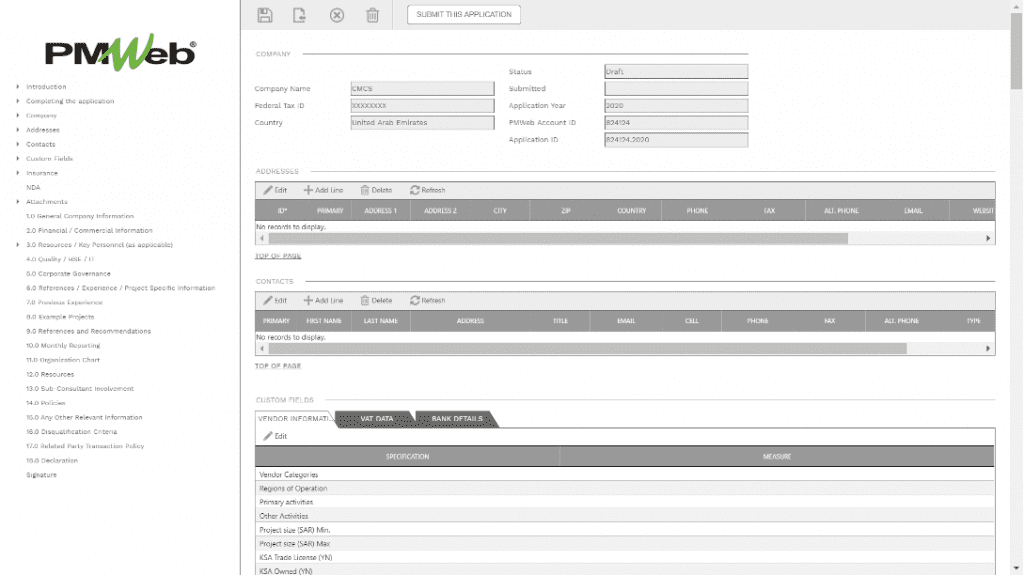
In addition, PMWeb allows applying a formal process for reviewing and approving the vendor’s submission. PMWeb allows creating an unlimited number of scoring templates to comply with the different prequalification analysis and assessment requirements needed by the project owner. PMWeb scoring template allows defining all possible types of assessment that need to be performed. Those include, for example, currency, date and number values, text response documents provided, among many others.
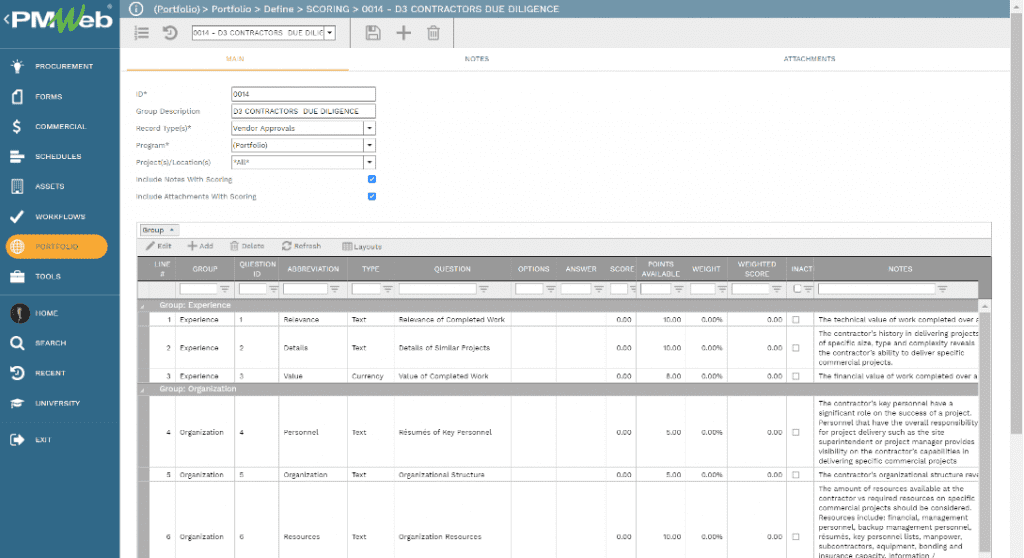
The attachment tab will include all documents submitted by the contractor or consultant required in the online prequalification submission. In addition, the project owner team can upload and attach other documents and add links to PMWeb records and imported MS Outlook emails. This will ensure the analysis and assessment process is comprehensive and all used documents are captured and available for review.
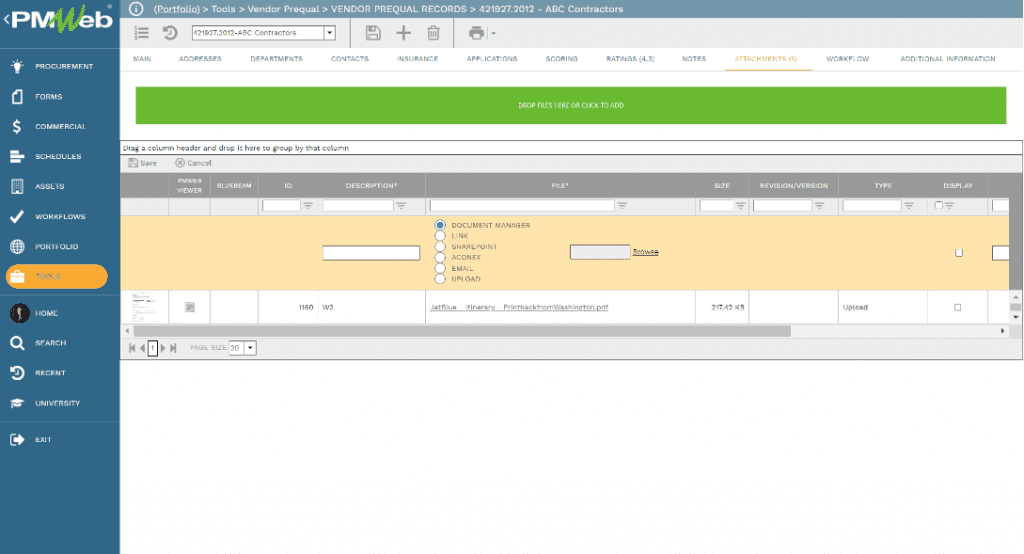
Similar to all other PMWeb modules, the prequalification assessment module will be assigned a workflow to formalize the review and approval of the prequalification scoring provided by the project team. The workflow will identify the workflow steps, duration, responsibility, available action types, and sequence. The workflow could include conditions to ensure that the correct approvals are secured depending on the approval authority levels set for the project.

In addition, it is important to implement a process for Performance Management of the consultants, contractors, subcontractors, and suppliers within the vendors’ database, to understand if they should be used in the future or engaged in preference to others. Appraisal of vendors’ performance could be designed using PMWeb form builder to cover different aspects of their performance. For example, it could include an appraisal of their HSE, quality, response to NCR and remedial work, adherence to the project schedule, managing and responding to communications, the correctness of their interim payment certificates and final account, actions to mitigate issues, among others.
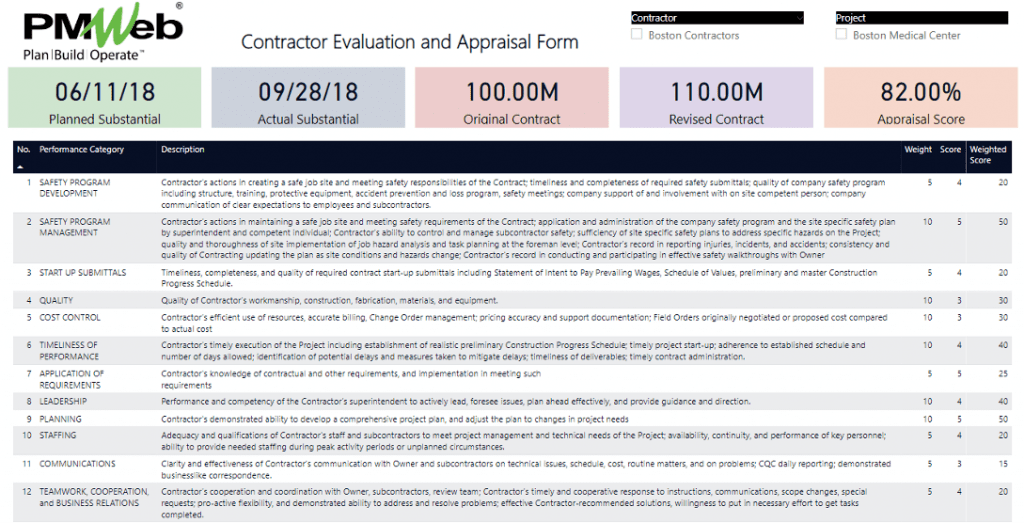
The information captured for the vendors will become the basis to enable the commercial management to monitor, track and report the vendor management processes. The more data is captured, the more information will become available for the commercial management to better manage this requirement. What is important is that all available data to report on is trustworthy and can be used to have the insight to make faster and better-informed decisions.




